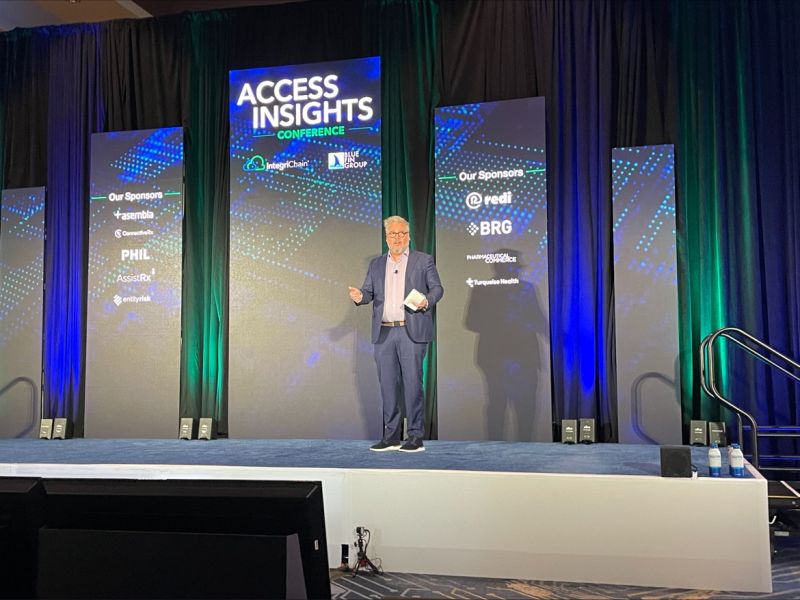Access Insights 2023: Fight for the Dollar
Bill Roth provides insight as to how where chief commercial officers and access leaders can plan for a profitable product lifecycle.

IntegriChain’s 2023 Access Insights Conference from Orlando led off with a keynote from Bill Roth, SVP and managing partner for the company’s consulting business, Blue Fin Group. Interestingly enough, he opened up his presentation with a reference to the film The Big Short, which features a group of individuals that predicted that the subprime market would fail.
“What I'm going to walk through today is the equivalent,” Roth said. “And it's going to mean that a lot of us have to think about our industry very differently. And I think that's kind of the best way to kind of scare everybody a little bit.”
A premise of the “Fight for the Dollar” is that not every product launches the same way, in the same channel. A common way of thinking previously was to place a product in wholesale, and let retail naturally pull it through. However, Roth notes that there have been Blue Fin clients reporting that patients aren’t able to get their branded prescriptions anymore. This is intensifying to the point that national retail chains may not be able to continue to accept prescriptions for certain products, which has been unheard of from pharmacies.
The fight
When it comes to the fight, it features manufacturers, payers, pharmacies, distributors, and patients. According to Roth, manufacturers have challenges with pricing and price increases across the general medicine (GenMed) and specialty spaces, and are being “pressured by channel constituents compressed with reimbursement pressure and models that are ‘unbundling’ the generics and branded businesses.”
Retailers and distributors have been losing their margin on generics, as generics are transitioning to cash; they also have innovative brands as competition.
As for payers, when it comes to the more crowded drug classes, they are under the impression that they have what they need, while treating GenMed differently than specialty.
Products
Just as a snapshot, branded products continue to grow mix against the pharmaceutical invoice revenue of generics and biosimilars; in fact, from 2018-2022, brands grew 39% and are expected to grow at a compound annual growth rate (CAGR) of 10-12% by 2030.
What’s interesting is that different therapeutic areas and drug classes tend to tell different fight stories. For example, Roth notes that oncology is generally an area dominated by providers, as hospitals and clinics control 70% of prescriptions. Immunology and neurology on the other hands are dominated by payers.
As it pertains to neurology, there is plenty of excitement in this area—continued innovation in Alzheimer’s is expected, and specialty generics are showing promise. And when it comes to mental health products (where Alzheimer’s fits the mold, alongside schizophrenia, pain, migraine, and MDD), these types of products are launching at specialty lite and the high end of GenMed.
Pharmacy benefit managers (PBMs) have restricted their economic models to accommodate for the changing product mix and proposed policy changes; the space itself has endured two main waves of profit transformation over the past decade including:
- A transition from rebates only, as drug prices increased, and the gross-to-net (GTN) bubble has grown
- A shifted focus to admin fees over the last six years
Pharmacies
Pharmacies, which can be split into three main categories—specialty, retail, and cash—are beginning to see a bit of shift. Cash now represents 10% of total prescription and is considered the fastest growing segment of pharmacy, with Amazon Pharmacy, GoodRx, Mark Cuban’s Cost Plus drawing attention to Cash Pay opportunities.
Data showed that as of 2021, over 92% of prescriptions leaving the pharmacy are generic, as PBMs, retailer, and distributors are favoring them over brand names due to incentives. For example, PBMs are incentivizing retailers to suppress brands by generic utilization rates consisting of a blend of 85% to 15%, lowering reimbursement on all prescriptions if brands outpace generics.
Reference
Fight for the Dollar. November 6, 2023. Access Insights Conference, Orlando.